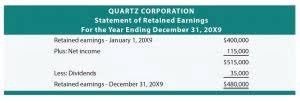Cash vs Accrual Basis of Accounting

To record the accrual of interest, debit the Interest Expense account, if you’re the borrower, reflecting the cost of borrowing funds. Credit bookkeeping for cleaning business the Accrued Interest Payable account, which recognizes a liability for this unpaid interest. Now that you’re accruing wisdom as well as interest, make those educated decisions.

What Is Accrual Accounting, and How Does It Work?
Accrual accounting provides a more accurate picture of a company’s financial position. However, many small cash basis accounting measures income based on businesses use cash accounting because it is less confusing. Larger companies are required to use the accrual method of accounting if their average gross receipt of revenues is more than $25 million over the previous three years. If a company does not meet the average revenue requirement, it can choose to use cash basis or accrual as its accounting method. The general concept of accrual accounting is that accounting journal entries are made when a good or service is provided rather than when payment is made or received. SaaS accounting often faces challenges such as managing complex billing cycles, ensuring sales tax compliance, and accurately reporting deferred revenue.
- It requires no accruals, and so can be operated with a reduced knowledge of accounting.
- Daily accrual might have you paying slightly more in March than February, purely because of those extra couple of days.
- Similarly, an accrual basis company will record an expense as incurred, while a cash basis company would instead wait to pay its supplier before recording the expense.
- However, if an inventory is necessary to account for your income or your company’s income is over $26 million, the IRS will require you to use the accrual method.
- Investment accounts handle accrued interest with all the precision of a master chef measuring ingredients — every pinch matters.
- As each month of the year passes, the dental office can reduce the prepaid expense account by $12 to show it has ‘used up’ one month of its prepaid expense (asset).
Accruals are an indicator of liquidity.
For 2024, small business taxpayers with average annual gross receipts of $30 million or less in the prior three-year period can use it. When the entity performs the services or delivered goods to customers, then we need to debit deferred revenue to release liabilities and credit revenue to recognize sales revenues. Each method identifies a different set of rules for recognizing revenues and expenses. The accrual basis records transactions when they occur, while the cash basis records them only when cash changes hands.
Financial Accounting I
- Using the accrual accounting method, the landlord would set up an accrued revenue receivable account (an asset) for the $2,500 to show that they have provided services but haven’t yet received payment.
- By following these steps, you can track the interest ticking up on investments or loans, like watching a second hand on a clock.
- With FreshBooks, you can send professional invoices, calculate expenses, accept payments online, and more using industry-standard double-entry accounting.
- For large corporations, accrual accounting isn’t just a choice — it’s often mandatory.
- Companies might also use modified accrual accounting and modified cash basis accounting.
- Small errors in SaaS accounting can escalate into significant problems, potentially requiring restatements and undermining financial integrity.
Adam Hayes, Ph.D., CFA, is a financial writer with 15+ years Wall Street experience as a derivatives trader. Besides his Certified Public Accountant extensive derivative trading expertise, Adam is an expert in economics and behavioral finance. Adam received his master’s in economics from The New School for Social Research and his Ph.D. from the University of Wisconsin-Madison in sociology. He currently researches and teaches economic sociology and the social studies of finance at the Hebrew University in Jerusalem. Monthly Recurring Revenue (MRR) is the total monthly revenue generated from clients’ subscriptions. It serves as a critical gauge of monthly revenue, factoring in new sales, cancellations, and upgrades.

Example of Reporting Revenues Under the Accrual Basis of Accounting
- SaaS accounting is crucial for managing the unique financial aspects of subscription-based businesses.
- Accrued revenue is income you’ve earned by providing a product or service, even though you haven’t been paid yet.
- This method arose from the increasing complexity of business transactions and a desire for more accurate financial information.
- Recording the expense in November provides an accurate view of costs aligned with operations.
- Under the revenue recognition principle, you would record the revenue in August, when you fulfilled your obligation by delivering the furniture, even though you haven’t been paid yet.
- Accruals are revenues earned or expenses incurred that impact a company’s net income on the income statement but cash related to the transaction hasn’t yet changed hands.
This involves meeting specific criteria that define the obligations and rights of both parties involved. Requires that expenses be matched with the revenues they help to generate during the same period. Accrued interest refers to the amount of interest that has accumulated on a debt or investment over time but hasn’t been paid out yet. It matters because it affects how much you’ll eventually pay on what you borrow or earn on your investments. Understanding accrued interest helps in forecasting financial obligations and returns, aiding in effective budgeting and financial planning. Taking these insights on accrued interest to heart, it’s time to turn theory into action.







